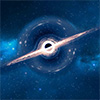 A research team is asking for the public's help to find some of the most mysterious, elusive objects in the Universe - black holes. By examining data from the SuperWASP survey, the team hope to detect changes in starlight that may provide evidence for the existence of these black holes.
A research team is asking for the public's help to find some of the most mysterious, elusive objects in the Universe - black holes. By examining data from the SuperWASP survey, the team hope to detect changes in starlight that may provide evidence for the existence of these black holes.
Jul 11th, 2022
Read more
 Key precursors for life on Earth are abundant in interstellar Molecular Clouds and could have reached Earth inside meteors and comets.
Key precursors for life on Earth are abundant in interstellar Molecular Clouds and could have reached Earth inside meteors and comets.
Jul 8th, 2022
Read more
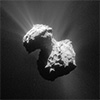 Scientists have identified an unexpected richness of complex organic molecules at a comet. Delivered to the early Earth by impacting comets, these organics may have helped to kick-start carbon-based life as we know it.
Scientists have identified an unexpected richness of complex organic molecules at a comet. Delivered to the early Earth by impacting comets, these organics may have helped to kick-start carbon-based life as we know it.
Jul 5th, 2022
Read more
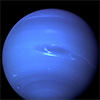 Nasa has recently announced funding for a study into the feasibility of sending swarms of miniature swimming robots to explore oceans beneath the icy shells of our Solar System's many 'ocean worlds'. But don�t imagine metal humanoids swimming frog-like underwater. They will probably be simple, triangular wedges.
Nasa has recently announced funding for a study into the feasibility of sending swarms of miniature swimming robots to explore oceans beneath the icy shells of our Solar System's many 'ocean worlds'. But don�t imagine metal humanoids swimming frog-like underwater. They will probably be simple, triangular wedges.
Jul 4th, 2022
Read more
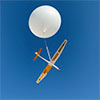 A concept developed by aerospace experts and a planetary scientist takes inspiration from albatross flight to learn more about the Red Planet's atmosphere and geology.
A concept developed by aerospace experts and a planetary scientist takes inspiration from albatross flight to learn more about the Red Planet's atmosphere and geology.
Jul 2nd, 2022
Read more
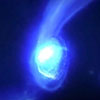 Astronomers detect the most distant galaxy rotation ever observed, suggesting an initial stage of rotational motion development.
Astronomers detect the most distant galaxy rotation ever observed, suggesting an initial stage of rotational motion development.
Jul 1st, 2022
Read more
 The research investigated the shinbones of 17 astronauts after being in space, and found that people who went on space missions for longer than 6 months had substantially less bone recovery than people who were in space for less than 6 months.
The research investigated the shinbones of 17 astronauts after being in space, and found that people who went on space missions for longer than 6 months had substantially less bone recovery than people who were in space for less than 6 months.
Jun 30th, 2022
Read more
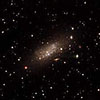 An ultra-faint dwarf galaxy, believed to be a 'fossil' of one of the first ever galaxies, has been discovered by galactic archeologists.
An ultra-faint dwarf galaxy, believed to be a 'fossil' of one of the first ever galaxies, has been discovered by galactic archeologists.
Jun 30th, 2022
Read more
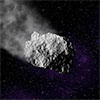 A space probe colliding with an asteroid may deform its target far more severely than previously thought.
A space probe colliding with an asteroid may deform its target far more severely than previously thought.
Jun 29th, 2022
Read more
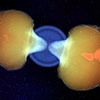 Astrophysicists has developed the first-ever full 3D simulation of an entire evolution of a jet formed by a collapsing star, or a 'collapsar'. New simulation also shows gamma ray bursts are 10 times rarer than previously thought.
Astrophysicists has developed the first-ever full 3D simulation of an entire evolution of a jet formed by a collapsing star, or a 'collapsar'. New simulation also shows gamma ray bursts are 10 times rarer than previously thought.
Jun 29th, 2022
Read more
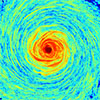 On the 50th anniversary of the discovery of a close connection between star formation in galaxies and their infrared and radio radiation, researchers have now deciphered the underlying physics.
On the 50th anniversary of the discovery of a close connection between star formation in galaxies and their infrared and radio radiation, researchers have now deciphered the underlying physics.
Jun 29th, 2022
Read more
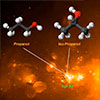 An international group of researchers reports the first identification iso-propanol in interstellar space, a substance which is used as a sanitizer on Earth. Iso-propanol is the largest alcohol detected so far, demonstrating the increasing complexity of members of one of the most abundant classes of molecule that can be found in space.
An international group of researchers reports the first identification iso-propanol in interstellar space, a substance which is used as a sanitizer on Earth. Iso-propanol is the largest alcohol detected so far, demonstrating the increasing complexity of members of one of the most abundant classes of molecule that can be found in space.
Jun 28th, 2022
Read more
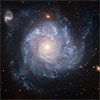 A tenacious star validates a revised model of supernovae.
A tenacious star validates a revised model of supernovae.
Jun 23rd, 2022
Read more
 A new citizen science project allows volunteers to play an important role in helping scientists learn more about the atmosphere on Jupiter. Citizen scientists can help astrophysicists categorize tens of thousands of stunning images taken from the Juno spacecraft with just a web browser.
A new citizen science project allows volunteers to play an important role in helping scientists learn more about the atmosphere on Jupiter. Citizen scientists can help astrophysicists categorize tens of thousands of stunning images taken from the Juno spacecraft with just a web browser.
Jun 23rd, 2022
Read more
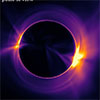 Researchers were able to use the unique subtle flickering of the bright glow of orbiting gas to construct the most accurate model to date of our own galaxy's central black hole, providing insight into properties such as its structure and motion.
Researchers were able to use the unique subtle flickering of the bright glow of orbiting gas to construct the most accurate model to date of our own galaxy's central black hole, providing insight into properties such as its structure and motion.
Jun 22nd, 2022
Read more
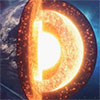 Scientists evaluated how the atomic structure of magnesium germanate changes under extremely high pressures. They discovered that the mineral adopted the structure of a compound called thorium phosphide. This, they think, could be an important component of the deep interiors of large, rocky extrasolar planets.
Scientists evaluated how the atomic structure of magnesium germanate changes under extremely high pressures. They discovered that the mineral adopted the structure of a compound called thorium phosphide. This, they think, could be an important component of the deep interiors of large, rocky extrasolar planets.
Jun 22nd, 2022
Read more
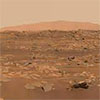 The extremely salty, very cold, and almost oxygen-free environment under the permafrost of Lost Hammer Spring in Canada's High Arctic is the one that most closely resembles certain areas on Mars. So, if you want to learn more about the kinds of life forms that could once have existed - or may still exist - on Mars, this is a good place to look.
The extremely salty, very cold, and almost oxygen-free environment under the permafrost of Lost Hammer Spring in Canada's High Arctic is the one that most closely resembles certain areas on Mars. So, if you want to learn more about the kinds of life forms that could once have existed - or may still exist - on Mars, this is a good place to look.
Jun 22nd, 2022
Read more
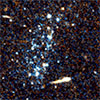 Astronomers have identified five examples of a new class of stellar system. They're not quite galaxies and only exist in isolation.
Astronomers have identified five examples of a new class of stellar system. They're not quite galaxies and only exist in isolation.
Jun 17th, 2022
Read more
 A research team is asking for the public's help to find some of the most mysterious, elusive objects in the Universe - black holes. By examining data from the SuperWASP survey, the team hope to detect changes in starlight that may provide evidence for the existence of these black holes.
A research team is asking for the public's help to find some of the most mysterious, elusive objects in the Universe - black holes. By examining data from the SuperWASP survey, the team hope to detect changes in starlight that may provide evidence for the existence of these black holes.
 Subscribe to our Space Exploration News feed
Subscribe to our Space Exploration News feed















